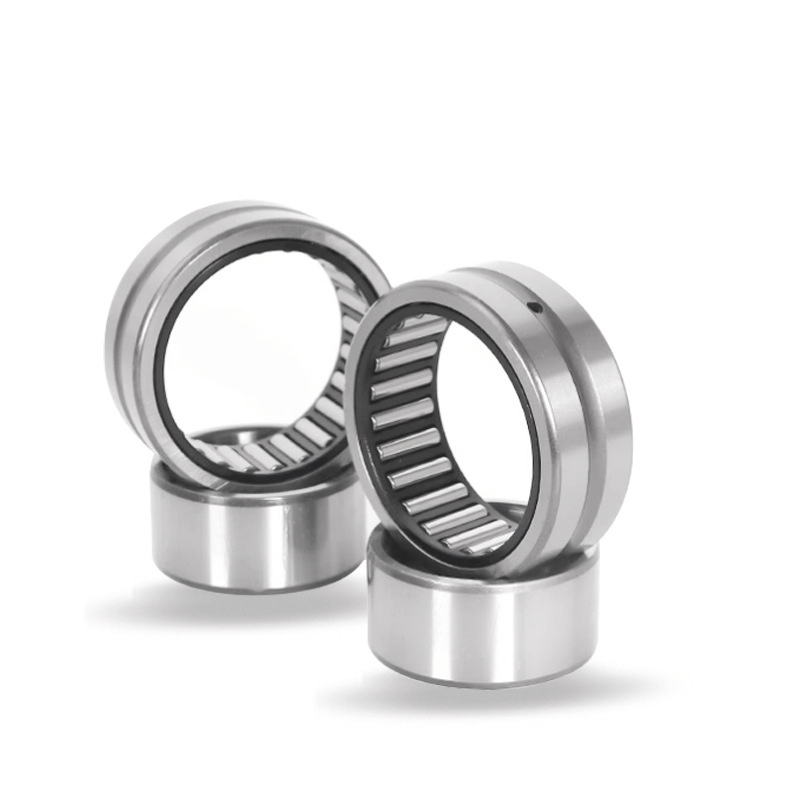Last Updated on September 27, 2024 by Chen

Table of Contents
A needle roller bearing is a specialized roller bearing that stands out due to its compact size and high load-bearing capacity. It is commonly used when space is limited, yet the bearing must handle heavy loads. The rollers in these bearings are much thinner and longer than traditional roller bearings, giving them a unique advantage in certain applications.
What is a Needle Roller Bearing?
A needle roller bearing uses long, thin cylindrical rollers that resemble needles—hence the name. Unlike ordinary roller bearings, where the rollers are only slightly longer than their diameter, needle roller bearings typically feature rollers that are at least four times as long as they are wide. This design increases the surface contact area between the rollers and the raceways, allowing for a higher load capacity while maintaining a compact form.
These bearings consist of several parts: the inner race, the outer race, and the needle-like cylindrical rollers. In some designs, there may also be a cage that helps keep the rollers in place and evenly spaced to ensure smooth operation. Needle roller bearings are made from high-strength materials like steel, which helps them withstand both radial loads (forces perpendicular to the shaft) and, in some cases, axial loads (forces parallel to the shaft).
Compared to other types of roller bearings, needle bearings are highly efficient when space is at a premium. While traditional roller bearings may take up more space for the same load-bearing capacity, needle bearings excel in applications where size matters but strength cannot be compromised. Additionally, they are versatile and can operate at various speeds, though proper lubrication and precise alignment are critical to ensure long-lasting performance.
What are Needle Roller Bearings Used For?
Needle roller bearings are widely used in industries that require high load capacity in a small, compact space. They are especially popular in the automotive industry, where they are used in gearboxes, transmissions, and engine components. In these applications, the compact size of the needle bearings allows for smoother operation without taking up too much room inside the machinery.
They are also found in aerospace applications, where weight and space constraints are crucial. These bearings help ensure the smooth movement of components within an aircraft, such as control systems and turbines, without adding unnecessary weight.
Other common applications include agricultural machinery, industrial automation systems, two-stroke engines, and outboard motors. In fitness equipment like treadmills or ellipticals, needle roller bearings contribute to the smooth motion of moving parts while supporting significant loads.
The ability of needle roller bearings to support heavy radial loads in a small package is the primary reason they are found across such a broad range of industries and machines.
Advantages and Disadvantages of Needle Roller Bearings
Like any mechanical component, needle roller bearings come with their own set of advantages and disadvantages.
Pros:
- Compact Design: Needle roller bearings offer a high load-bearing capacity without taking up much space. This makes them perfect for applications where size and weight are critical factors.
- High Load Capacity: The long, thin rollers in needle bearings allow them to handle much higher radial loads compared to other bearings of the same size.
- Reduced Friction: The design of needle roller bearings distributes load efficiently over a large surface area, reducing friction and, consequently, wear over time.
Cons:
- Sensitive to Installation: Needle roller bearings require precise alignment and proper lubrication for optimal performance. Misalignment or inadequate lubrication can lead to early failure.
- Limited Axial Load Capacity: Although some designs of needle roller bearings can handle axial loads, most are primarily designed to support radial loads. Axial load capability is often more limited compared to other bearing types.
- Vulnerability to Contaminants: These bearings need a clean environment and proper sealing. Any dirt, debris, or inadequate lubrication can impair their performance.
Needle Roller Bearing Size Chart
Selecting the right size of needle roller bearing for a specific application requires careful consideration of several measurements: the bore diameter (the inner hole of the bearing), the outer diameter, the width, and the load rating. A detailed size chart can help you compare various options and choose the best one for your needs.
| Bore Diameter (mm) | Outer Diameter (mm) | Width (mm) | Load Rating (kN) |
|---|---|---|---|
| 10 | 17 | 13 | 6.2 |
| 15 | 22 | 16 | 9.5 |
| 20 | 28 | 16 | 12.8 |
| 25 | 32 | 18 | 16.4 |
This chart provides the essential dimensions needed to select a bearing that matches your equipment’s requirements. Be sure to refer to the manufacturer’s specifications to ensure compatibility with your application. For a more comprehensive range of needle roller bearings and to explore various sizes, visit Bushing MFG.

